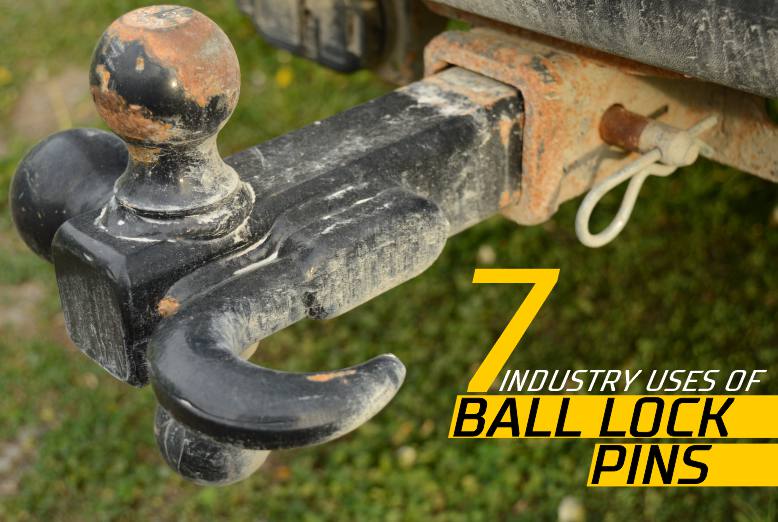Whether you’re a mechanic, landscape architect, or contractor, ball lock pins are simple but highly effective tools to keep things in place. They’re often used to fasten two pieces together and in different industries.
The way they work is pretty simple: the balls on their heads are forced into their grooves by a threaded stud on the shank. This action creates a strong bond, making ball lock pins more durable than other pins. They’re also more secure and effective, mainly when used with quick release pins.

Being versatile, some of the industries that use ball lock pins include:
1. Construction
Constructors use them to hold pieces of equipment together and keep them from falling apart. They also use them to hold scaffolding together, as well as construction materials and tools. Additionally, they’re an essential part of any project that involves building or repairing something outdoors. Furthermore, they help prevent accidents by keeping everything secure during transportation, allowing job safety.
2. Aerospace
The aerospace industry uses ball lock pins to connect moving or rotating parts. These pins are designed with a ball on each end and a groove between the two balls, which allows them to be inserted into holes and locked into place by turning the top of the pin.
Ball lock pins can withstand large amounts of force without breaking, making them highly desirable for use when heavy equipment must operate at high speeds or experience heavy vibrations. An example application would be connecting gear on an airplane wing, where any jostling could cause damage to other components. The pins would hold together even under extreme conditions, while allowing movement when necessary.
3. Railroad
Ball lock pins are versatile in many places, but railroad switches are one of the most common. A switch is where two tracks diverge from each other and rejoin. These can be found at many intersections along the track. They’re strong and durable and can withstand a lot of pressure, making them ideal for use in railroad switches. They also have large openings that make trains easy to pass, promoting operation. There are also fewer accidents due to derailment or collision with another train on either side of the pin.
4. Agriculture
Ball lock pins are crucial in agriculture to lift and move hay bales, feed bags, and grain bags. Hay bales are typically wrapped with twine. The twine needs to be cut so that you can move the hay bale from one location to another.
They also come in handy when cutting large bales of hay. They give workers access to the steel cable running through a section of the bale without causing damage or injury when running their hands across sharp edges while trying to cut through them with knives or other tools.
Finally, they serve as an anchor point for lifting equipment, such as forklifts, pallet jacks, and tractors.
All of these helps avoid accidents throughout the process.
5. Conveyors
Ball lock pins are used in a variety of conveyors. You’ll find them on conveyor belts and in the chains and pulleys that support them. They’re also perfect for connecting sprockets or gear to belts or chains so they can drive them effectively.
They’re instrumental to conveyors because they allow for a smooth transition between parts that would otherwise be hard to join together. For example, the ball lock pin will allow some flexibility while connecting two pieces of metal that aren’t perfectly flush with each other. That’ll keep everything from binding up under pressure during operation, so no one gets injured by flying metal shrapnel.
6. Automotive
The automotive industry uses ball lock pins to connect and hold parts, and create tension springs. Manufacturers use them for several vehicles, including cars, trucks, and motorcycles. They’re made from high-quality steel and will not rust or corrode over time. They’re also available in various sizes to find exactly what you need for your project.
7. Plumbing
They’re used to connect pipes in plumbing, as well as to fasten them to the ground. They’re also used in cranes and other heavy machinery to connect the crane’s load and its main body. This ensures that there’s no slippage when lifting heavy objects.
The plumbing industry relies heavily on these pins because they can hold up large amounts of weight without breaking. The types of applications mentioned above will likely continue to grow over time because they have become so ubiquitous in modern society.
Conclusion
Ball lock pins are a beneficial and versatile fastening solution for industrial activities. They come in various sizes and materials, allowing entrepreneurs to use them in nearly any industry. Their design provides ease of use, durability, and safety, which is why they’ve risen in popularity.




















